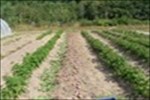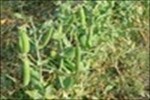
March 02, 2008
March weather is often unpredictable. In colder climates you probably cannot wait for the snow to melt, in warmer climates you can start working outside this month. Either way, there are things you can do to get ready for your spring planting.
YOUR MARCH TO DO LIST
- Keeping a journal. If you do not have a notebook yet, now is the time to get one. Keeping track of what and where you are planting your vegetables is very important for a successful vegetable garden.
- Visit your garden centers.
Depending on where you live garden centers will be starting to get in seedlings especially towards the end of the month. Here are some tips to follow:
- If you are new to vegetable gardening check out different centers to see what they have to offer and chat with the sales people to see how helpful they can be.
- When purchasing seedlings and equipment choose a reputable nursery or garden center; the cheapest product does not always save you money in the long run. Choose healthy plants.
- Choose centers that are devoted to gardening rather than big box type stores - the plants are usually cared for by people who know what they are doing resulting in a healthier plant for you to take home.
- Choose one where stock moves fairly quickly so that way you know you are buying fresh stock.
- Choosing your transplants
If you are not planning to start all your own seedlings it is important to choose what you bring into your garden wisely. The last thing you want to do is bring in pests or disease to your garden. Tips for buying healthy transplants:
- Vegetable plant stems should be sturdy and stocky not spindly.
- Leaf color should be a good medium green color. If plants are yellowish or pale green they may not be getting the nutrients they need for a good start.
- Inspect plants for insects; check the underside of the leaves for insects and discoloration.
- Never buy vegetable plants with fruit on them, this is a sign they are old and they may not adjust well when transplanted.
- If vegetable plants have flowers, snip them off before transplanting into your garden bed. This allows the plant to send energy to root growth; flowers will grow back.
- When purchasing vegetable plants it is very important to get them transplanted into your garden within a few days of bringing them home.
- Get your soil ready for planting. For many of us March is the month we are physically getting into our gardens. For a healthy vegetable garden you need healthy garden soil. Learn more about preparing your garden soil .
- Read your seed packets You now have your garden plan, your soil is prepared and now you are ready to sow some seeds. Seed packets have valuable planting information. They have directions on when and how to plant for best results. Learn more about growing vegetables .
All of this will help you to make the right choices for your spring vegetable garden .
VEGETABLES OF THE MONTH
 Potatoes do not like water logged soil, so if your garden site is in a wet area wait until your soil is dryer before planting. I have planted as late as the end of April and still have harvested nice potatoes so do not panic if you cannot get yours out this month.
Potatoes do not like water logged soil, so if your garden site is in a wet area wait until your soil is dryer before planting. I have planted as late as the end of April and still have harvested nice potatoes so do not panic if you cannot get yours out this month.
Here are my tips for growing great potatoes:
- Choose disease resistant varieties.
- Keep them evenly moist but not soggy for the first six weeks after planting.
- Keep tubers well covered so they are not exposed to sunlight by hilling the new growth.
- Once the plant has flowered you can stop hilling but now is the time to mulch with hay, straw or grass clippings to keep the soil cool and weed free.
- After the flowers have opened you can harvest for "new" potatoes. Dig around the base of the plant pulling out the small potatoes.
- Once the foliage starts to die back the tubers are fully grown.
- If your climate is not extremely warm or wet mature potatoes can be kept in the ground for several weeks.
Learn more about growing potatoes here.
 Eating freshly picked peas is truly a gardeners delight. Peas are really easy to grow and will do so in almost any type of soil.
Eating freshly picked peas is truly a gardeners delight. Peas are really easy to grow and will do so in almost any type of soil.
Here are my tips for growing great peas:
- Do not plant seeds if your soil is too wet; they will not germinate. Raised beds usually dry out sooner in the spring so this is a good option if you have a wet garden site.
- They like cool temperatures so the spring months are the perfect time to sow your seeds. Follow your seed packet for planting instructions.
- Shelling peas are harvested when the pod is plump and bright green. You then open the pod and eat the green peas that are inside.
- Snap peas are harvested when plump and bright green as well. The difference from shelling peas is the snap pea has an edible pod that is very sweet and crunchy. These are my favorite.
- Snow peas are harvested when the pod is still flat and about 2-3 inches long. With this variety the pod is edible.
- Harvest daily to encourage more pod growth.
- To save your own seed, set aside a couple of plants and do not harvest the pods. Let them fill out and after they have dried on the vine harvest them, shell and then store the peas in a dry cool place over the winter.
Learn more about growing peas here.
March is the month to get out into your garden and start planting. Check in with www.your-vegetable-gardening-helper.com for the simplest steps to having your own vegetables.
If you have enjoyed this ezine please tell a friend.
Welcome to the world of vegetable gardening!
Catherine